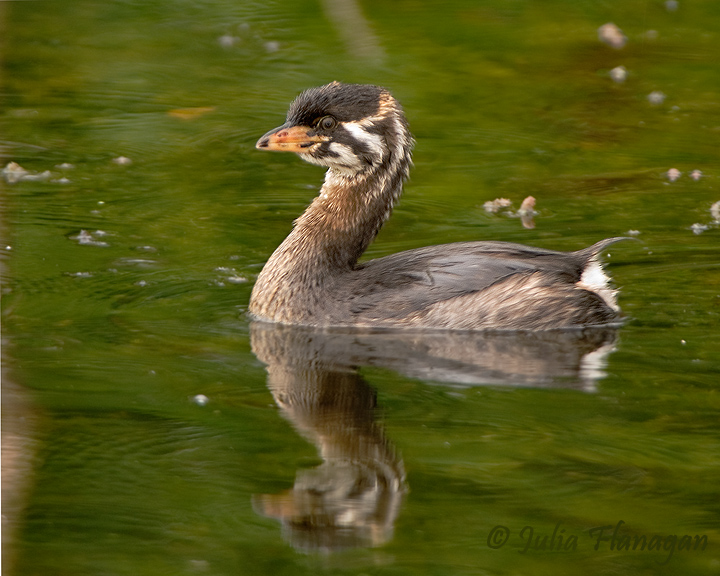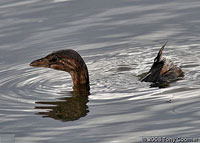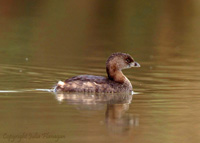
Pied-billed Grebe The Pied-billed Grebe is the most common grebe in North America. It prefers open fresh waters but can sometimes be seen on slow moving streams or in marshes. They are rarely seen in salt water. If grebes see you first, they are likely to dive head-first under the water, or sink down so that only their head shows. They are also not a bird keen on walking around or flying and look ungainly doing so. The chunky little dark brown or gray bird is about a foot long with a two foot wingspan at most. It is distinguished by its white rump and its stubby bill that has a black vertical stripe about half-way along it – hence the bird’s name. Its short “s” shaped neck is also a lighter shade than the body. There are no outward differences between the males and females. Sometimes called Dabchicks, or water-witches, the Pied-billed Grebe eats mostly aquatic insects but is known to enjoy the occasional tadpole, small frog, or fish. They also eat their own feathers and feed them to their young, perhaps to aid digestion, but no one really knows why. Pied-billed Grebes lead solitary lives for the most part except during the breeding season. That is also usually the only time you will hear the male grebe as he calls for a mate with a peculiar cow-cow-cow sound. If he is lucky and finds a mate, they build their nest in shallow water on mats of floating vegetation. The female lays her eggs and both parents share the work of incubating them for the required three weeks. If they have to leave the nest, they cover it up with vegetation for protection. When the young grebes hatch, they often take a ride on their parents’ backs, although they are capable of swimming almost from birth. |







